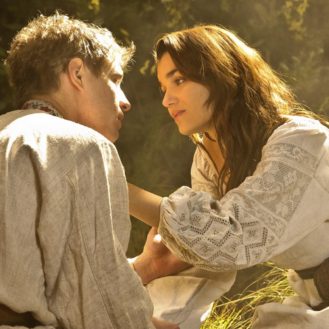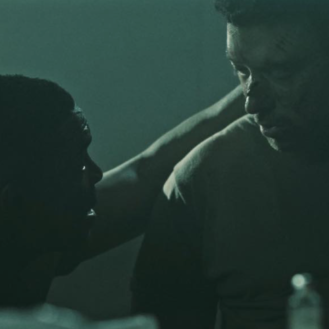Garry Winogrand: All Things are Photographable is a slow burn. Directed by Sasha Waters Freyer, the documentary focuses on photography legend Garry Winograd whose unique approach to street photography captured the spirit of American life in the 1960s in New York and later, through the 1970s and 1980s, in Texas and California. As the film emphasizes, Winogrand’s method could be considered ahead of his time in that he shot using analogue technology without regard for conserving film. In fact, he shot hundreds of thousands of rolls of film during his lifetime, many of which were undeveloped at the time of his death in his mid-fifties.
Those looking for an edge-of-your-seat viewing experience should look elsewhere. Freyer’s examination of Winogrand’s life and work isn’t going to shatter anyone’s illusions about life and art, or change the way they see the world. It is, however, a thoughtful and well-paced film that deftly combines academic analysis of the photographer’s work with a smattering of intimate biographical details.
There is nothing immediately enthralling about Freyer’s portrait of the great photographer; the film begins, predictably, with Winogrand’s childhood in the Bronx and his relationship to his parents. While the information is certainly central to understanding the man behind the camera, it is introduced before we have a chance to care about its possible significance. It isn’t until about twenty minutes in, as the narrative shifts away from his early life and career and accounts his transition from commercial photographer to artist, that the film finally seems to find its stride.
One of the things I enjoyed most was the exploration of the (sometimes) contradictory critical reception of Winogrand’s work. At one point, interviews are shown with friends, artists, and critics who offer radically different interpretations of the social and personal significance of a single photograph. It is fascinating stuff, but it certainly won’t be what everyone is looking for from this film. Garry Winogrand: All Things are Photographable is a documentary that seems to be more interested in intellectual analysis than digging into the personal details and dramas of the artist’s life. On a more intimate level, interviews with close friends, fellow artists, and family provide a welcome balance. Winogrand’s first wife, in particular, is down-to-earth and charming in her honest reflection on Winogrand as a man, father, and husband. She is one of the few interview subjects that seems open and vulnerable, allowing for a much-needed human connection and a reprieve from the lofty academic and philosophical discussion that permeates much of the film.
Yet, beyond its careful attempts to strike a balance between the personal and the intellectual, the best moments of Garry Winogrand: All Things are Photographable don’t feature any interviews at all. For each of the main periods of the artist’s life and work, a series of his photographs is shown, slideshow-like, while a piece of music from that era plays. These are emotionally moving and significant moments that force the audience to look actively at the images that Winogrand created while also considering the social, cultural, and political context in which they were taken. It is as close a glimpse as we are able to get into Winogrand’s world and while the rest of the film, with its philosophizing about the significance of Winogrand’s prolific photographic practice and the nature of the photograph as an artform is all very nice, it is these moments that linger after the credits roll.
**********
Do You Tweet? Follow These Tweeple:
Shannon Page: @ShannonEvePage





Be the first to comment